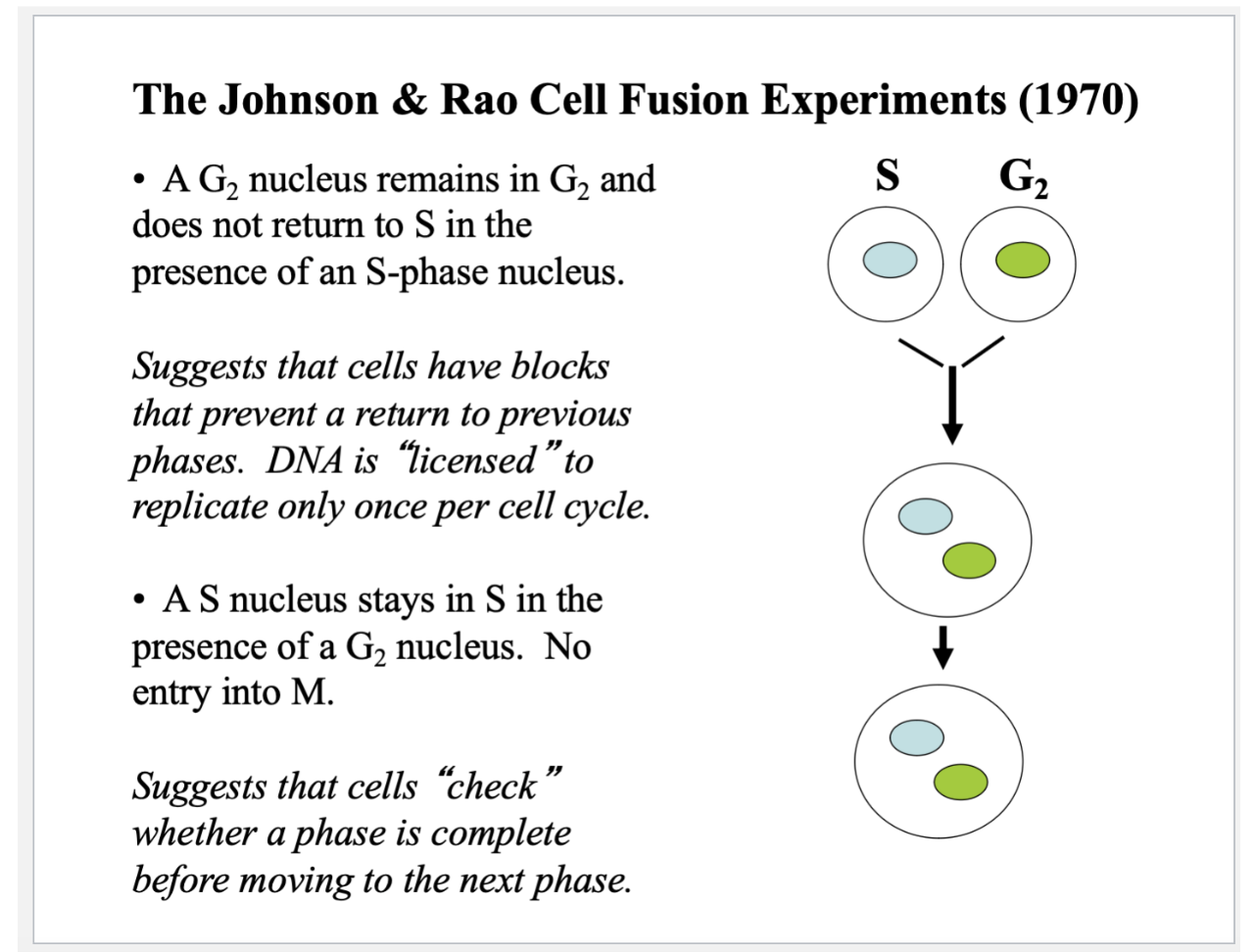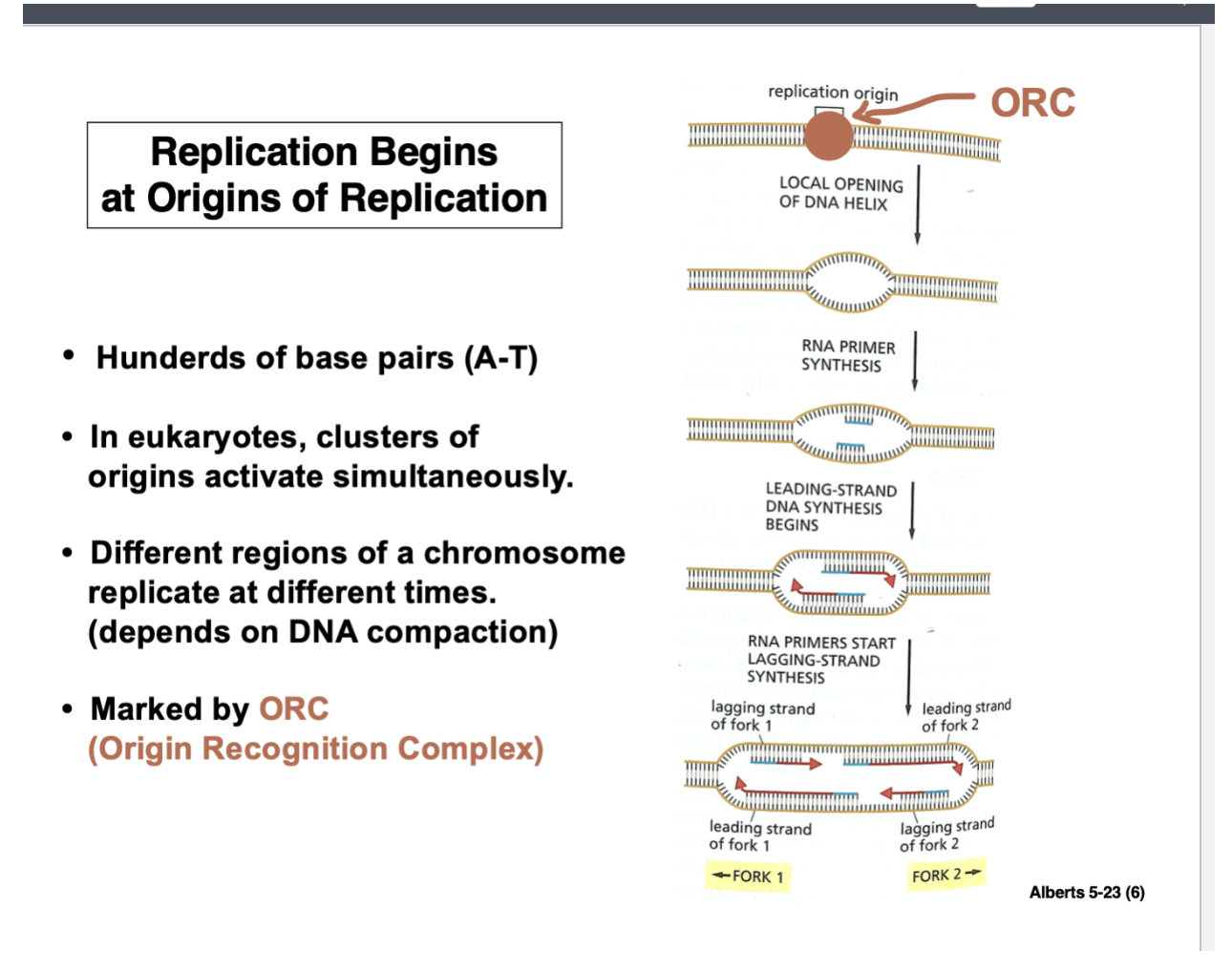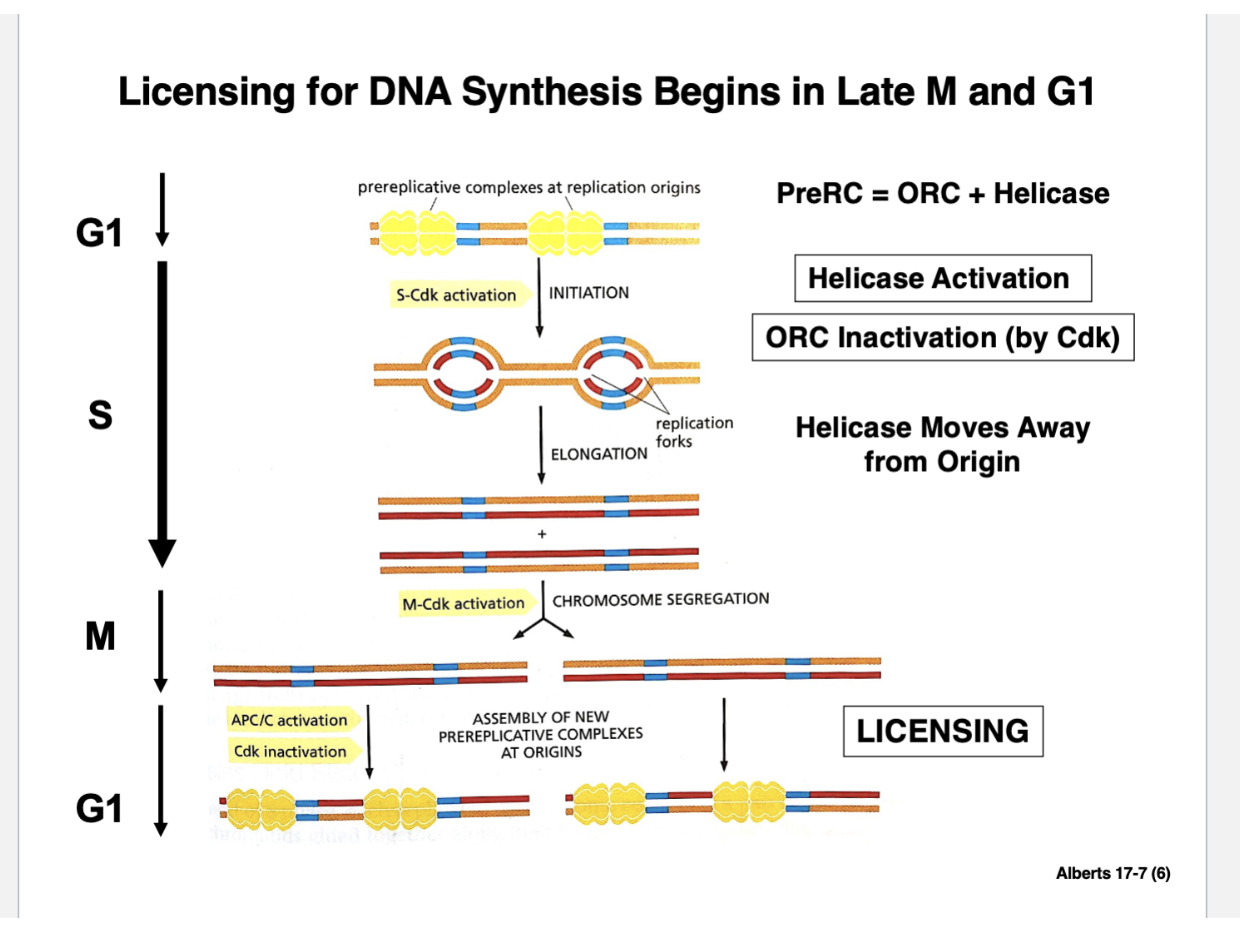Cell Biology (Notes 34)
1/5
Earn XP
Description and Tags
Final Exam
Name | Mastery | Learn | Test | Matching | Spaced |
|---|
No study sessions yet.
6 Terms
The Johnson and Rao Cell Fusion Experiments (1970)
A G2 nucleus fuses with an S nucleus to become a heterokaryon that progresses through the cell cycle
G1 nucleus waits for the S phase nucleus to catch up in the cell cycle —> The S nucleus becomes G2 and then both proceed into M phase at the same time
The G2 nucleus in the presence of S phase stays in G2 - it DOES NOT RE-ENTER S PHASE
Doesn’t take a step backward
Why is this not occurring?
DNA is only licensed to replicate once per cycle

Replication Begins at Origins of Replication
Replication begins at the ORIGIN (called the REPLICATION ORIGIN)
Essentially, the replication origin is a stretch of nucleotides or hundreds of base pairs (A-T)
Characteristic of this length of DNA is it’s rich in As and Ts
This is important because the two strands of DNA have to separate in order for replication of each strand to occur
It is much easier to break apart AT rich DNA than GC rich DNA because A’s and T’s have two H bonds between them
G’s and C’s have three H bonds
The cell is set up well to separate DNA
In different groupings of cells, there are certain nucleotide sequences that serve as recognition site for proteins involved in replication process to bind to DNA
There is a lot going on in the relatively short DNA sequences — in eukaryotes, there are multiple origin replications on the chromosome
Not all of the origins of replication are active - that is replication is not initiated at each origin at the same time
Clusters or origins that become active
If you look at the distance between the origins of replication along the chromosome
Not all the origins become active at the same time
Euchromatin replicates early in S phase
Heterochromatin replicates later in S phase
This is due to the amount of DNA compaction in euchromatin (less compaction) vs heterochromatin (more compaction)

ORC - Origin Recognition Complex
Sits at the origin
Complex of proteins that is a mark on the chromosomes - the ORC sits there through the entire cell cycle unless it is displaced in the brief period of time when a replication fork moves through this region and DNA replication is occurring
Have to get the ORC out of the way to let DNA replication to occur
After replication occurs, ORC rebinds to the origin
IMPORTANT PROTEIN COMPLEX to allow process to occur once
Licensing for DNA Synthesis Begins in Late M and G1
When replication is occurring and there’s a strand of DNA and a replication fork moving along, you need to unwind the DNA strand
This is done through enzymatic action of helices
ORC bound to helicase forms the PreRC
The PreRC stands for the pre-replicative complex
Big protein complex side-by-side bound to each other at the origin of replication
As the cell moves into S phase, there’s a Cdk and an S phase cyclin bound to each other
What will happen is that the helicase will become active
This will allow the DNA strands to separate
There are other proteins that interact with the helices - those are phosphorylated by the S phase Cdk kinase
In order to activate the helicase, some of those proteins have to be phosphorylated by S phase cdk complexes
Multiple events are occurring by S-Cdk activation and phosphorylation MUST OCCUR

ORC Inactivation
Inactivated by Cdk
When ORC is phosphorylated by Cdk, it can no longer bind to the helicase
In S phase and replication is occurring, the replication forks move to the left and right
Helicase is moving away from the origin
Towards the end of S phase, there is replicated DNA — going through M phase-Cdk activation
In Late M phase, there is going to be the assembly of new pre-replicated complexes
As this cell leaves M phase and enters G1, there will be ORC helicase complexes re-assembling at the origins of replication
This is the license to be able to replicate the DNA again - in order to say DNA is ready to replicate, the preRC must be re-assembled at the origins of replication
Already in G2, there are preparing events that are the foundations — in late M phase, early G1, the foundation is being laid for the next round of replication and the next S phase
The other protein that is important is GEMININ
Geminin
Protecting the newly replicated DNA from having the complexes REBIND to it
In M phase that the Gemini is destroyed
Licensing complexes then bind to the DNA - something is being destroyed
Destroyed through APC
Ubiquinated and destroyed by proteasome